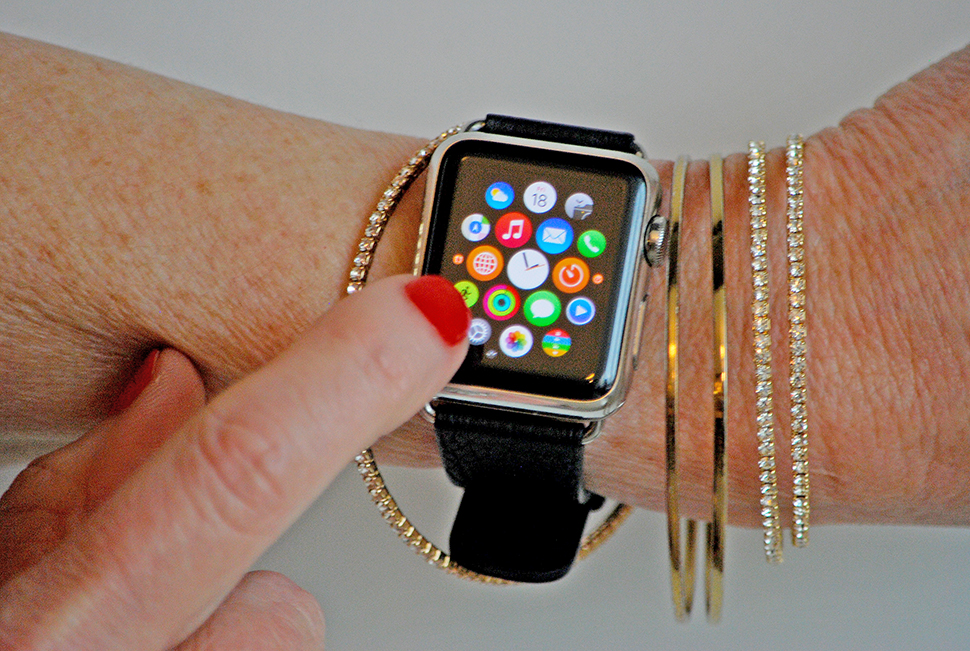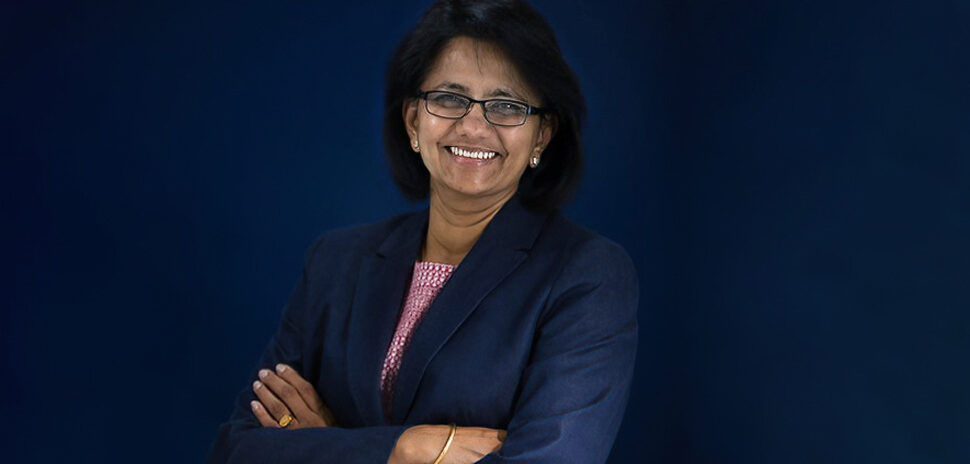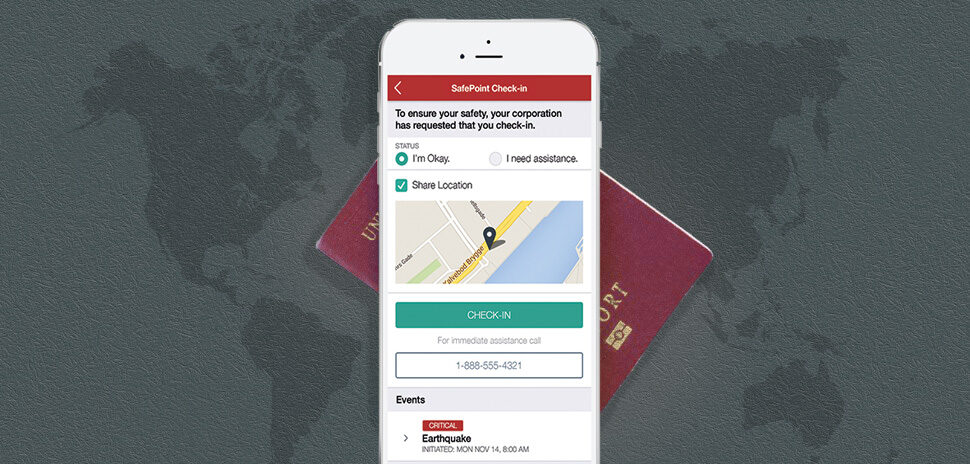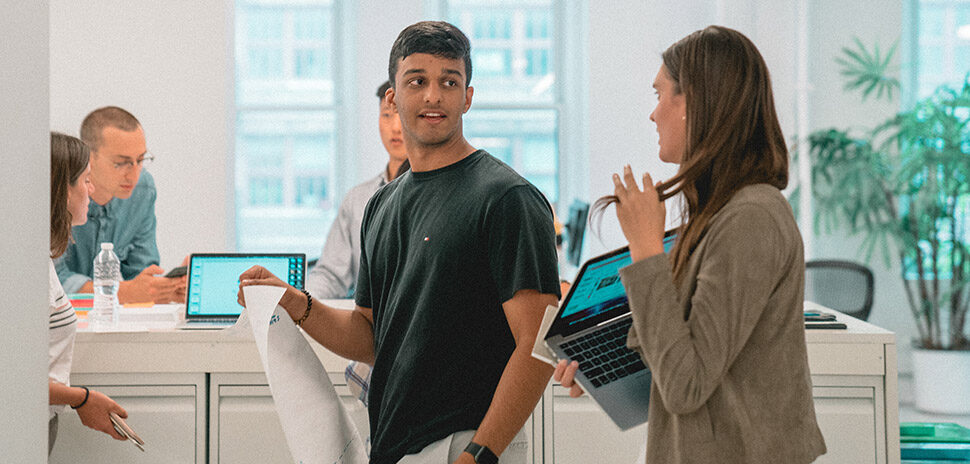While the launch of the Apple Watch managed to capture the lion’s share of buzz, smartwatches and wearables have been gradually growing in popularity.
Kickstarter phenom Pebble saw nearly 69,000 people drop over $10 million on its first-generation smartwatch — and followed that success up by shattering Kickstarter records with its second-generation timepiece.
Within 49 minutes, it had raised $1 million, becoming the fastest project ever to reach that milestone. Within a week, it had raised more than $13.3 million, making it the most-funded campaign in Kickstarter history.
Apple’s fashion-forward foray into the segment has expanded its appeal.
The smartwatch had firmly planted itself in the tech lover’s psyche.
And while the technology continues to maintain a mostly-niche appeal, Apple’s fashion-forward foray into the segment has expanded its appeal. Smartwatches are only one segment of the so-called wearables market, which includes various body-borne gadgets like Google Glass, fitness trackers like Jawbone, and even smart jewelry like Leaf Wearables.
These products mark only the beginning of the innovation cycle.
As smart sensors become embedded throughout fabrics, objects and machines, the promise of wearables is connected into the Internet of Things to build a true direct-response and feedback mechanism between individuals and their surroundings.
Products for travel
In travel, the impact of wearables and smartwatches already is tangible.
Apple Watch apps from major airlines allow travelers to board quickly and painlessly with the flick of a wrist. No more misplaced boarding passes or precarious smartphone scanning.
Directions using light vibrations change the way visitors navigate a city — a nudge left or right keeps you on track without having to pull out a phone.
We’re looking to take it even further — from a one-way means of communication to an interactive, on-the-go service experience,” John Samuel said.
Lost or deactivated room keys become a thing of the past, and even pulling out a smartphone is not necessary when a wearable-enabled guest can simply tap the lock to enter.
John Samuel, SVP of Sabre Design, emphasizes how user experience must be at the center of all development for the emerging platform of wearables:
“Wearable technology is fast becoming a prominent means of customer notification and communication. We’re looking to take it even further — from a one-way means of communication to an interactive, on-the-go service experience,” Samuel said.
Airlines and hotels are also prime candidates for wearables.
The complexity of hospitality operations demands the right information at the right time in the most useful format — and that’s generally an item that sits on an employee’s body. It’s harder to lose and a touch more resilient.
The bite-size “glances” that drive these small screens also ensure that the timely delivery of information is confined to only the most essential facts. This reduces complexity and room for operator error while also increasing efficiency.
As safety devices
Another area of impact is safety, a mission critical priority for airlines and ground transportation businesses.
Many wearables offer biometric tracking as a core feature, which gives the industry a new way to monitor potentially life-threatening issues.
Many wearables offer biometric tracking as a core feature, which gives the industry a new way to monitor potentially life-threatening issues. Think about heart rates of pilots, air traffic controllers, train conductors and bus drivers as a key measure of passenger safety.
As this technology matures, the cost inevitably will come down.
The integrations also will begin to expand beyond limited-use cases and become yet another “how did we live without this” technology.
While there are certainly privacy concerns and the “creep factor,” the benefits and efficiencies of an invisible layer of communication in an ever-more-congested planet will convince most of us to get on board with the wearables revolution.
For a daily dose of what’s new and next in Dallas-Fort Worth innovation, subscribe to our Dallas Innovates e-newsletter.











![Erica Kosemund, Chief Brand Officer, Choctaw Nation of Oklahoma; Gillian Breidenbach, Chief Partnership Officer, North Texas FWC Organizing Committee; Chief Gary Batton, Chief of Choctaw Nation of Oklahoma; Monica Paul, Executive Director of Dallas Sports Commission and President of North Texas FWC Organizing Committee; John Hobbs, Senior Executive Officer of Communications, Choctaw Nation of Oklahoma; and Heidi Grant, Senior Executive Officer of Commerce Administration, Choctaw Nation of Oklahoma, celebrate Choctaw Casinos & Resorts becoming an Official Dallas World Cup 2026 Host City Supporter. [Photo: North Texas FWC Organizing Committee/Choctaw Casinos & Resorts]](https://s24806.pcdn.co/wp-content/uploads/2025/12/FIFA-Choctaw-dec-2025-75x69.jpg)



![Erica Kosemund, Chief Brand Officer, Choctaw Nation of Oklahoma; Gillian Breidenbach, Chief Partnership Officer, North Texas FWC Organizing Committee; Chief Gary Batton, Chief of Choctaw Nation of Oklahoma; Monica Paul, Executive Director of Dallas Sports Commission and President of North Texas FWC Organizing Committee; John Hobbs, Senior Executive Officer of Communications, Choctaw Nation of Oklahoma; and Heidi Grant, Senior Executive Officer of Commerce Administration, Choctaw Nation of Oklahoma, celebrate Choctaw Casinos & Resorts becoming an Official Dallas World Cup 2026 Host City Supporter. [Photo: North Texas FWC Organizing Committee/Choctaw Casinos & Resorts]](https://s24806.pcdn.co/wp-content/uploads/2025/12/FIFA-Choctaw-dec-2025.jpg)

















